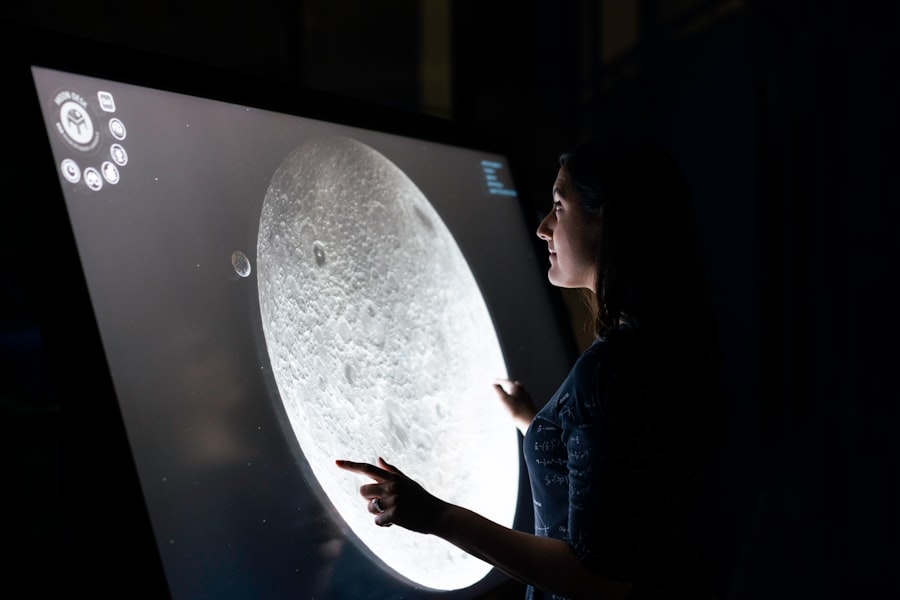The field of space engineering has undergone a remarkable transformation since its inception in the mid-20th century. Initially driven by the Cold War rivalry between the United States and the Soviet Union, early space endeavors were characterized by a race to achieve significant milestones, such as launching the first artificial satellite, Sputnik, in 1957, and landing humans on the Moon in 1969. These pioneering efforts laid the groundwork for modern space engineering, establishing fundamental principles of rocketry, orbital mechanics, and spacecraft design.
The early engineers and scientists faced numerous challenges, including limited technology and a lack of understanding of the harsh conditions of space. Their relentless pursuit of knowledge and innovation set the stage for future advancements. As the decades progressed, space engineering evolved from a government-driven initiative to a more diversified field involving private companies and international collaborations.
The 1980s and 1990s saw the emergence of commercial space ventures, with companies like SpaceX and Boeing beginning to explore opportunities beyond traditional government contracts. This shift not only democratized access to space but also spurred innovation through competition. The introduction of reusable rocket technology, exemplified by SpaceX’s Falcon 9, has significantly reduced launch costs and increased the frequency of missions.
Today, space engineering encompasses a wide array of disciplines, including materials science, computer engineering, and environmental science, reflecting the complexity and interdisciplinary nature of modern space exploration.
Key Takeaways
- Space engineering has evolved significantly over the years, with advancements in technology and innovation driving progress in space exploration.
- Cutting-edge technologies such as 3D printing, advanced materials, and autonomous systems are revolutionizing space exploration and enabling new possibilities for human spaceflight.
- Advancements in spacecraft design and propulsion systems, including electric propulsion and reusable rockets, are making space travel more efficient and cost-effective.
- Robotics and artificial intelligence play a crucial role in space engineering, enabling autonomous operations, remote exploration, and maintenance of spacecraft and infrastructure.
- Sustainable solutions, such as closed-loop life support systems and resource utilization, are essential for long-term space missions and human colonization efforts. Collaborative international efforts are key to advancing space engineering and achieving ambitious goals in space exploration, including space tourism and colonization.
Cutting-Edge Technologies in Space Exploration
The landscape of space exploration is continually reshaped by cutting-edge technologies that enhance our ability to explore the cosmos. One of the most significant advancements is the development of miniaturized satellites, or CubeSats, which have revolutionized how we gather data from space. These small, cost-effective satellites can be deployed in swarms to conduct various scientific experiments or monitor Earth’s environment.
For instance, NASA’s MarCO mission utilized two CubeSats to relay data from the InSight lander on Mars, demonstrating their potential for interplanetary communication. Another groundbreaking technology is the advancement in propulsion systems, particularly ion propulsion. Unlike traditional chemical rockets that rely on combustion, ion propulsion systems use electric fields to accelerate ions, providing a more efficient means of propulsion for long-duration missions.
NASA’s Dawn spacecraft, which explored the asteroid belt and visited the dwarf planet Ceres, employed ion propulsion to achieve its complex trajectory. This technology allows spacecraft to travel farther and faster while consuming significantly less fuel than conventional methods. As we look to future missions to distant destinations like Mars or beyond, these innovations will be crucial in overcoming the challenges posed by vast distances and limited resources.
Advancements in Spacecraft Design and Propulsion Systems

The design of spacecraft has evolved dramatically over the years, driven by the need for increased efficiency, safety, and functionality. Modern spacecraft are equipped with advanced materials that enhance durability while minimizing weight. For example, carbon fiber composites are now commonly used in satellite construction due to their strength-to-weight ratio and resistance to extreme temperatures.
This shift towards lightweight materials allows for more payload capacity and improved fuel efficiency during launches. In addition to materials advancements, propulsion systems have seen significant innovations that enhance mission capabilities. The development of hybrid propulsion systems combines the benefits of both solid and liquid fuels, offering greater flexibility in mission planning.
The Space Launch System (SLS), NASA’s next-generation rocket designed for deep space exploration, utilizes a combination of solid rocket boosters and a liquid core stage to achieve powerful thrust while maintaining control during ascent. This hybrid approach not only maximizes performance but also allows for adaptability in various mission profiles.
The Role of Robotics and Artificial Intelligence in Space Engineering
| Metrics | Value |
|---|---|
| Number of robotic missions to space | Over 100 |
| Percentage of space exploration missions using AI | Around 50% |
| Number of satellites controlled by AI | Thousands |
| Percentage of space engineering tasks performed by robots | Over 70% |
Robotics and artificial intelligence (AI) have become integral components of modern space engineering, enabling missions that would be impossible or too dangerous for human astronauts. Robotic systems are employed for tasks ranging from satellite deployment to planetary exploration. The Mars rovers, such as Curiosity and Perseverance, are prime examples of how robotics can be utilized to conduct scientific research on other planets.
These rovers are equipped with sophisticated instruments that analyze soil samples, capture high-resolution images, and even search for signs of past life. AI plays a crucial role in enhancing the capabilities of these robotic systems. Machine learning algorithms enable rovers to make autonomous decisions based on real-time data analysis, allowing them to navigate complex terrains without direct human intervention.
For instance, Perseverance uses AI to identify interesting geological features and prioritize them for further investigation. This autonomy not only increases efficiency but also reduces the time lag associated with Earth-based control. As AI technology continues to advance, its integration into space engineering will likely lead to even more sophisticated autonomous systems capable of conducting complex missions with minimal human oversight.
Sustainable Solutions for Long-Term Space Missions
As humanity sets its sights on long-term space missions, particularly those aimed at Mars colonization or deep-space exploration, sustainability has emerged as a critical consideration in space engineering. The challenges posed by extended missions necessitate innovative solutions that minimize resource consumption and waste generation. One promising approach is the development of closed-loop life support systems that recycle air, water, and waste products aboard spacecraft or habitats.
NASA’s Advanced Life Support program is actively researching technologies that can support human life on Mars by creating self-sustaining ecosystems. These systems would utilize bioreactors to convert waste into usable resources while maintaining a balanced environment for crew members. Additionally, solar energy harnessing technologies are being refined to provide reliable power sources for long-duration missions.
Solar panels equipped with advanced photovoltaic cells can efficiently convert sunlight into electricity, ensuring that spacecraft remain operational even in remote locations. Moreover, sustainable practices extend beyond life support systems to include materials recycling and in-situ resource utilization (ISRU). By utilizing local resources on celestial bodies—such as extracting water from lunar regolith or producing fuel from Martian carbon dioxide—missions can significantly reduce their reliance on Earth-based supplies.
This approach not only enhances mission feasibility but also paves the way for future colonization efforts by establishing a sustainable presence beyond our planet.
Space Mining and Resource Utilization

The concept of space mining has gained traction as technological advancements make it increasingly feasible to extract valuable resources from asteroids and other celestial bodies. Asteroids are believed to contain a wealth of minerals and metals essential for various industries on Earth, including platinum group metals and rare earth elements. Companies like Planetary Resources and Deep Space Industries have emerged with ambitious plans to explore these resources, aiming to establish a new frontier in mining.
One notable example is NASA’s OSIRIS-REx mission, which successfully collected samples from the near-Earth asteroid Bennu in 2020. The spacecraft’s ability to gather material from an asteroid demonstrates the potential for future mining operations. The samples returned to Earth will provide valuable insights into the composition of asteroids and inform strategies for resource extraction.
Furthermore, mining operations could support future space missions by providing essential materials for construction or fuel production in space. The implications of space mining extend beyond resource acquisition; they also raise important questions about governance and sustainability in outer space. As private companies venture into this new domain, international regulations will need to evolve to address issues such as property rights and environmental protection.
Establishing frameworks for responsible resource utilization will be crucial in ensuring that space mining contributes positively to both Earth’s economy and our understanding of the universe.
The Future of Space Tourism and Colonization
The burgeoning field of space tourism represents a significant shift in how humanity perceives access to outer space. Companies like Blue Origin and Virgin Galactic have made headlines with their suborbital flights aimed at providing civilians with a taste of space travel. These ventures not only offer unique experiences but also serve as a catalyst for technological advancements that could benefit broader space exploration efforts.
Looking ahead, the prospect of colonization becomes increasingly plausible as technology continues to advance. Mars has emerged as a primary target for potential human settlement due to its similarities to Earth and the presence of water ice at its poles. Initiatives like SpaceX’s Starship aim to facilitate human transport to Mars with plans for establishing self-sustaining colonies on the planet’s surface.
Such endeavors will require extensive planning around life support systems, habitat construction, and resource management. The challenges associated with colonization are immense; however, they also present opportunities for innovation across various fields. Developing habitats that can withstand Martian conditions while providing comfort and safety for inhabitants will require breakthroughs in materials science and engineering design.
Additionally, creating sustainable agricultural practices in extraterrestrial environments will be essential for long-term survival. As humanity embarks on this journey toward becoming an interplanetary species, collaboration between governments, private enterprises, and scientific communities will be vital in overcoming obstacles and realizing this ambitious vision.
Collaborative Efforts in International Space Engineering Initiatives
International collaboration has become increasingly important in addressing the complexities of modern space engineering challenges. The International Space Station (ISS) serves as a prime example of successful multinational cooperation in space exploration. Launched in 1998, the ISS is a joint project involving five participating space agencies: NASA (United States), Roscosmos (Russia), ESA (European Space Agency), JAXA (Japan), and CSA (Canada).
This collaborative effort has facilitated groundbreaking research across various scientific disciplines while fostering diplomatic relations among nations. As we look toward future endeavors such as lunar exploration through NASA’s Artemis program or potential missions to Mars, international partnerships will play a crucial role in pooling resources and expertise. Collaborative initiatives can help mitigate costs while enhancing mission capabilities through shared technology development and knowledge exchange.
For instance, ESA’s involvement in lunar exploration includes plans for its own lunar lander while contributing scientific instruments to NASA’s Artemis missions. Moreover, international agreements regarding space governance are essential as more nations and private entities enter the arena of space exploration. Treaties such as the Outer Space Treaty provide foundational principles for peaceful exploration; however, evolving technologies necessitate ongoing dialogue among nations to address emerging issues related to resource utilization, environmental protection, and planetary defense against asteroids or other threats.
By fostering collaboration on these fronts, humanity can work together toward a sustainable future in outer space while ensuring that exploration benefits all nations equitably.


